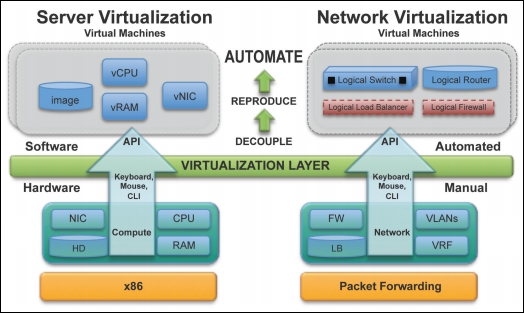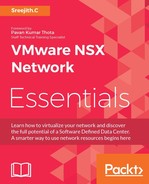Server virtualization is the mainframe for the 21st century. A key use of virtualization in modern-day business is to consolidate the existing infrastructure to fewer physical machines. All companies have already virtualized their infrastructure since that is a potential game changer as we could consolidate servers and management, and deployment became much simpler. A hypervisor is a piece of software that allows us to run multiple virtual machines. The following are two types of hypervisors:
- Bare metal: Bare metal or type-1 hypervisors are pieces of software running directly on hardware, for example, VMware ESXi, KVM, Citrix XenServer, and Microsoft Hyper-V.
- Hosted: Hosted or type-2 hypervisors run on an existing operating system. Basically, they abstract guest operating systems from the host operating system, for example, VirtualBox, VMware workstation, and VMware player.
Similar to how a virtual machine is created, monitored, and deleted, NSX for vSphere offers logical switching, hypervisor level routing, virtual NIC-level firewall protection and Layer 4-Layer 7 load balancing service which can be provisioned, monitored, and deleted from a single pane of glass. As a result, a virtualized network is much more scalable and cost-effective compared with traditional physical network provisioning and management. Because of its native integration with other VMware products such as VRealize Automation and VCloud Director, a customer would use NSX in most of the VMware environments.
The following figure depicts server virtualization and network virtualization:

